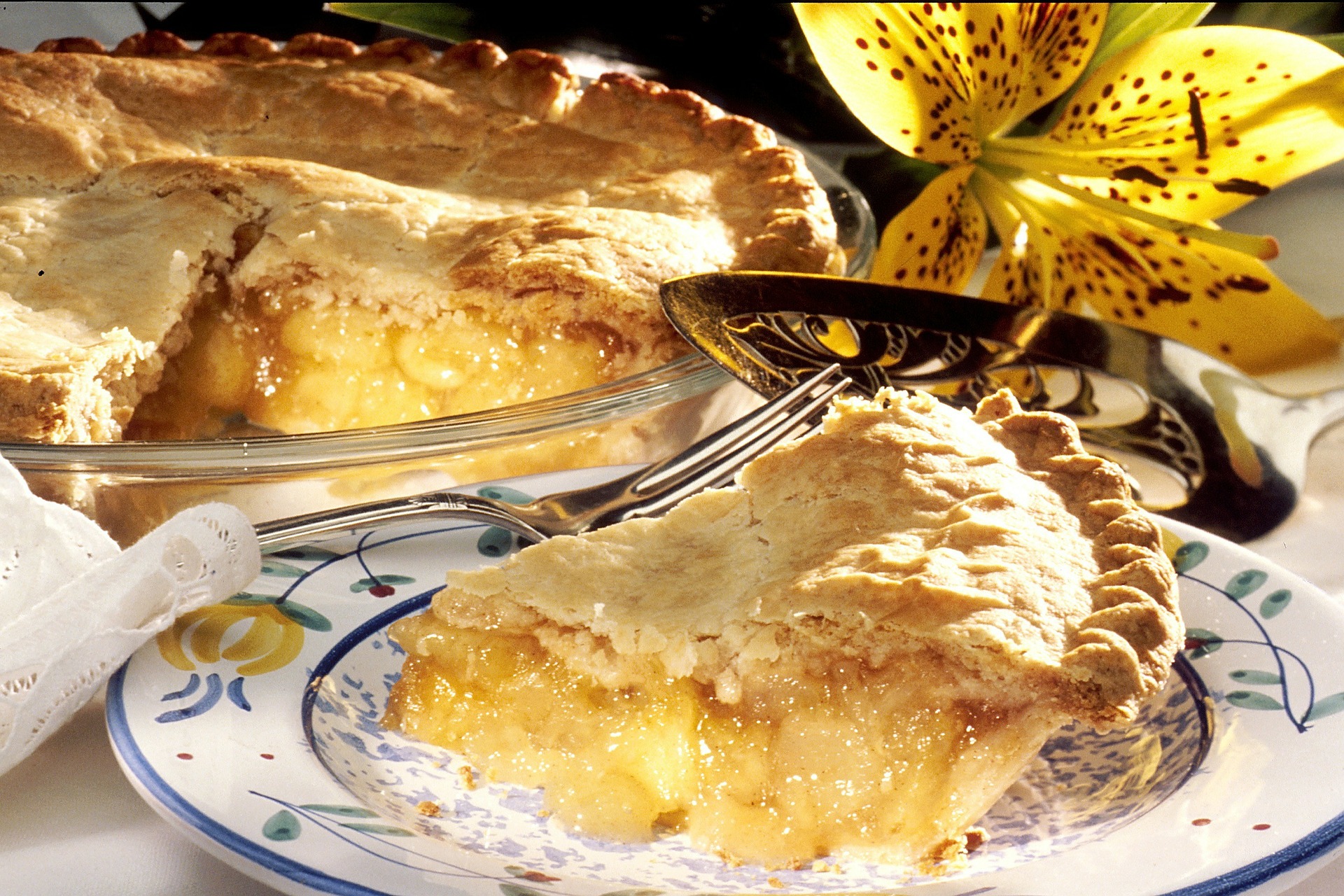Continuing on through apple month, also known as September, let’s find out what the history of apple pie is.
In addition to the history of apple pie in general, we are also taking a quick peak at the expression “as American as apple pie.” And, the origins of apple pie with ice cream, and apple pie with Cheddar.
Apple pies, in one form or another, have been around since the Middle Ages. The early versions were quite different from today’s.
For one thing, sugar was not typically added – this is because sugar was a costly and rare item. Secondly, the pastry was called a “coffin” or “cofyn,” and it wasn’t meant to be eaten; it merely contained the apple filling, preserving it in a time before refrigeration.
The very first apple pie recipe was printed by Geoffrey Chaucer in 1381. (Pumpkin pie, if you’re curious, first appeared in print hundreds of years later, in 1675.) The ingredients included apples, figs, raisins, pears, and saffron. Sugar became more widely available by the mid 1500s, which is when apple pie flavor evolved from savory to sweet.
The all American dessert made its way to America via Rome and England: The Romans brought apple trees to England, and the English brought them to the New World with the colonists, during the 17th century.
Prior to this time, only crab apple trees grew in what is now America. Even when (good) apples were available in our country, the colonists primarily used them to make cider rather than pie.
According to Time, a cookbook from 1796 yields only three recipes for sweet pies (compared to meat pies, which were popular). Although they don’t specify apple, I imagine it was one of the desserts listed.
As Americans migrated westward, the food known as pie began to grow and expand along with America. Pies began reflecting the different areas of where people were settling down. Not only apple, but blueberry, pumpkin, etc.
During the mid 1800s, the popularity of pie took a hit in light of growing concerns for healthy living. Pie dough in particular was frowned upon.
Apple pie began making a comeback during World War II (1939 to 1945) – a popular slogan for why soldiers were going to war was “for mom and apple pie.”
Of course, following the War, apple pie’s wholesome image only continued to surge. The 1950s and 1960s were all about housewives making delicious meals – and desserts! – at home for their families, nutrition be damned.
In addition, patriotism was filling the hearts of Americans during the 1960s. “For mom and apple pie” eventually progressed to “as American as apple pie.”
When it comes to serving apple pie with generous scoop of ice cream, we can thank the Dutch, who are also credited with lattice-style pie pastries.
The other main addition to apple pie is of course, a thick slice of Cheddar cheese. The apple and cheese combination is said to have originated in Yorkshire, England, where it can be known as “Yorkshire pie.”
Further, FoodTimeline.org informs us that, “The practice of combining cheese, fruit, and nuts dates back to ancient times. These were often served at the end of a meal because they were thought to aid in digestion.”
In more recent times, apple pie is still a classic dessert to enjoy after a savory meal. Of course, this is never more true than on Thanksgiving and Christmas.
Although our country is arguably becoming more health-conscious, I doubt this treasured American icon will fall from grace any time soon.

Hi Erin, I always thought the apple pie was first done at the Cambridge Hotel in Cambridge. Maybe it is just their version of it.
Hi Joan – I did find a few references on apple pie with ice cream/apple pie a la mode connecting it to the Cambridge Hotel. When I try to read up on it though I just keep finding articles on how Hotel Hell failed to save it and the hotel had to close.
It’s probably most likely that they played a significant part of popularizing the dish in America.
My grandfather could never eat apple pie without limburger cheese. I always thought of that as odd because Limburger cheese has quite a strong smell, or so it seemed to me.